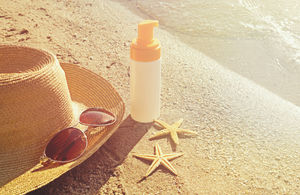Temperatuuril 38 in diabetchik
Diabetes and Body Temperature: Managing Cold, Numb or Tingly Feelings When you live with diabetes, it’s not uncommon to feel cold or numb, especially in your extremities. Your core body temperature is closely tied to your metabolism, and since diabetes wreaks havoc on your metabolic processes, you’re bound to sweat, shiver and shake more than the average person.Diabetes is a chronic disease that requires a person with diabetes to make a multitude of daily self-management decisions and to perform complex care activities.The development of lower extremity ulcers is a well known potential complication for patients with diabetes. This article reviews the common causes of diabetic foot ulceration and discusses methods for assessment and treatment to aid providers in developing appropriate strategies for foot care in individuals with diabetes.
Veresuhkur hommikul ja õhtul
Living with Diabetes. Storing Insulin. General Rules. To ensure that your insulin remains effective, stable and undamaged you should discard your ‘in use’ insulin after 28days, whether in a vial or cartridge. Insulin that is not in use should be stored in the refrigerator. If refrigeration is not possible, it can be kept at room temperature [15-25 degrees C] for 28 days.It's considered a fever if the patient has a rectal temperature over 38.5 degrees Celsius, so a body temperature from 39.4 - 39.5 to 39.6 means a high fever. The result tends to be 0.5 to 0.7 degrees greater than the oral temperature.if it is 38 or above it is above normal and 38.8 is on the verge.
Related queries:-> Diabeet mellitus tüüpi kaks rahvahooldust
• The fever is higher than 38.5ºC (101.3ºF) • You have a stiff neck, an unusual rash or difficulty breathing How to check your temperature if you do not have a thermometer There are some common signs and symptoms when your temperature goes above its normal level. These will vary between individuals.Figure 1. Proximal tubule and the pathogenesis of diabetic kidney disease. As a consequence of increased consumption, impaired utilization, and reduced delivery of O 2, the proximal tubule, by virtue of its high energy requirements and reliance on aerobic metabolism, is susceptible to ischemic injury in diabetes.As a general rule, a temperature of 38C (100.4F) or above is classified as a fever in children. But this can vary from child to child. Some children may be ill with a lower temperature, while others may have a higher temperature and be perfectly.
-> Miks ma vajan inuliini diabeedi jaoks
They believe that if the body temperature can be controlled, than perhaps the insulin can as well, which will produce a cure for diabetes and help many people in the world. This entry was posted in Diabetes News on January 7, 2011 by admin.For fevers 100-101 F (37.8-38.3 C), this is the only treatment and fever medicine is unnecessary. The goal of fever therapy is to bring the fever down to a comfortable level. Remember that fever medicine usually lowers fever 2 degrees F (1 - 1 1/2 degrees.A fever is an increase in your body temperature. Normal body temperature is 98.6°F (37°C). Fever is generally defined as greater than 100.4°F (38°C). Normal body temperature is 98.6°F (37°C). Fever is generally defined as greater than 100.4°F (38°C).
-> Kas diabeetilise kartuli supp on võimalik
Management of Hyperglycemia in Type 2 Diabetes, 2015: A Patient-Centered Approach Update to a Position Statement of the American Diabetes Association and the European Association for the Study of Diabetes Diabetes Care 2015;38:140–149 | DOI: 10.2337/dc14-2441 In2012,theAmerican DiabetesAssociation(AD A)and theEuropeanAssociation forthe.38–38.9°C – mild fever With a mild fever you might have flushed cheeks, feel a little lethargic, and be warm to touch. You will generally be able to carry out normal daily activities.Since body temperature rarely climbs above 99.9 degrees without a reason, this guide will consider a fever to be present when the body temperature is 100.0 F (38 degrees C) or higher. While temperatures between 98.6 and 99.9 degrees might be high for you, minor elevations in temperature are less likely to be a true indication of illness and are often within the range of normal variation.
-> Maksa steatoosiga diabeedi ennetamiseks
Aggregated GHS information provided by 24 companies from 2 notifications to the ECHA C L Inventory. H411 (95.83%): Toxic to aquatic life with long lasting effects [Hazardous to the aquatic environment, long-term hazard].Treating a fever (high temperature) in children. In children under 5, a fever is considered to be a temperature of 38C (100.4F) or above. Fever is very common in young children.Ranges in Body Temperatures. A temperature above 100.4°F (38°C) indicates a fever, called pyrexia in medical terms. Temperatures between 99°F (37.2°C) and 100.4°F (38°C) are called low-grade fever.
-> Diabeedi pärimise tõenäosus
Best Answer: Your use of the new IFCC units for the HbA1C is going to confuse a lot of people here, the IFCC of 38 mmol/mol corresponds with a DCCT of 5.6%, the reference range you are referring to of 20-42 mmol/mol corresponds with 4.0-6.0%. The definition for diabetes in the US is 6.5% so by both your reference range and the US standard.A normal temperature in babies and children is about 36.4C, but this can vary slightly from child to child. A fever is a high temperature of 38C or more. Fever is the body's natural response to fighting infections like coughs and colds. Many things can cause a high temperature in children.Vildagliptin is indicated in the treatment of type 2 diabetes mellitus in adults:As monotherapy- in patients inadequately controlled by diet and exercise alone and for whom metformin is inappropriate due to contraindications or intolerance.As dual oral therapy in combination with- metformin, in patients with insufficient glycaemic control despite maximal tolerated dose of monotherapy.
Temperatuuril 38 in diabetchik:
Rating: 318 / 402
Overall: 365 Rates



